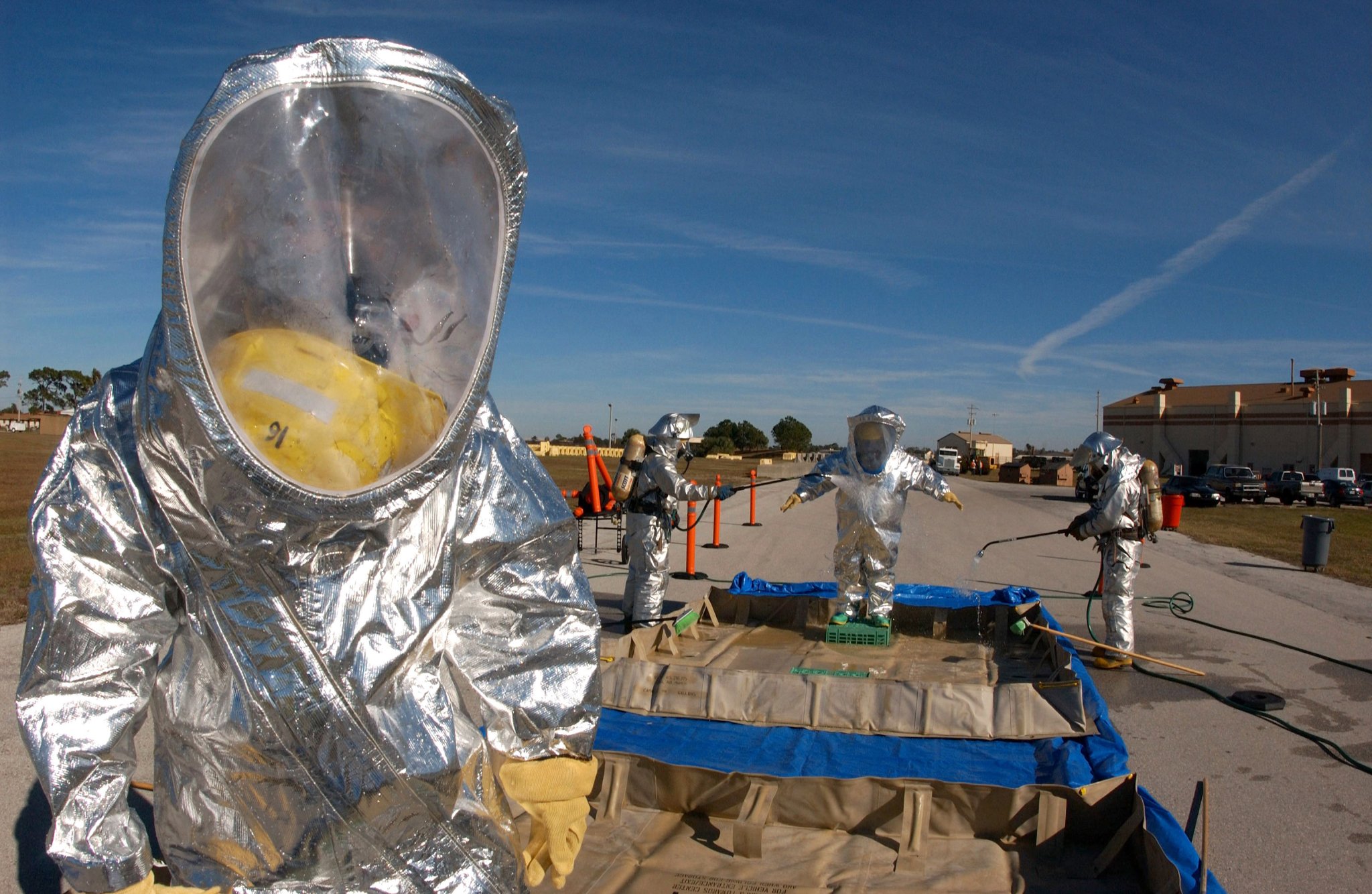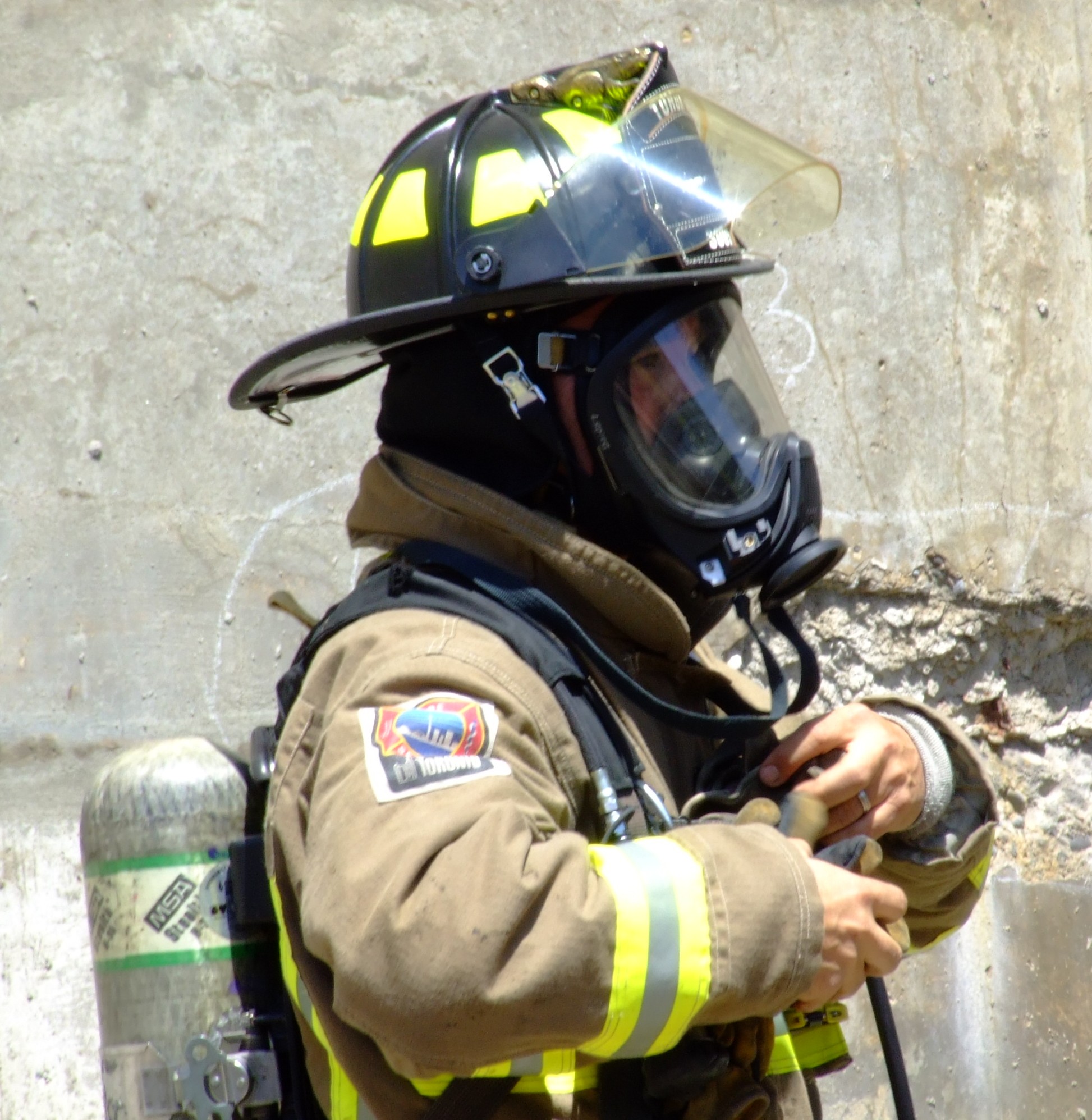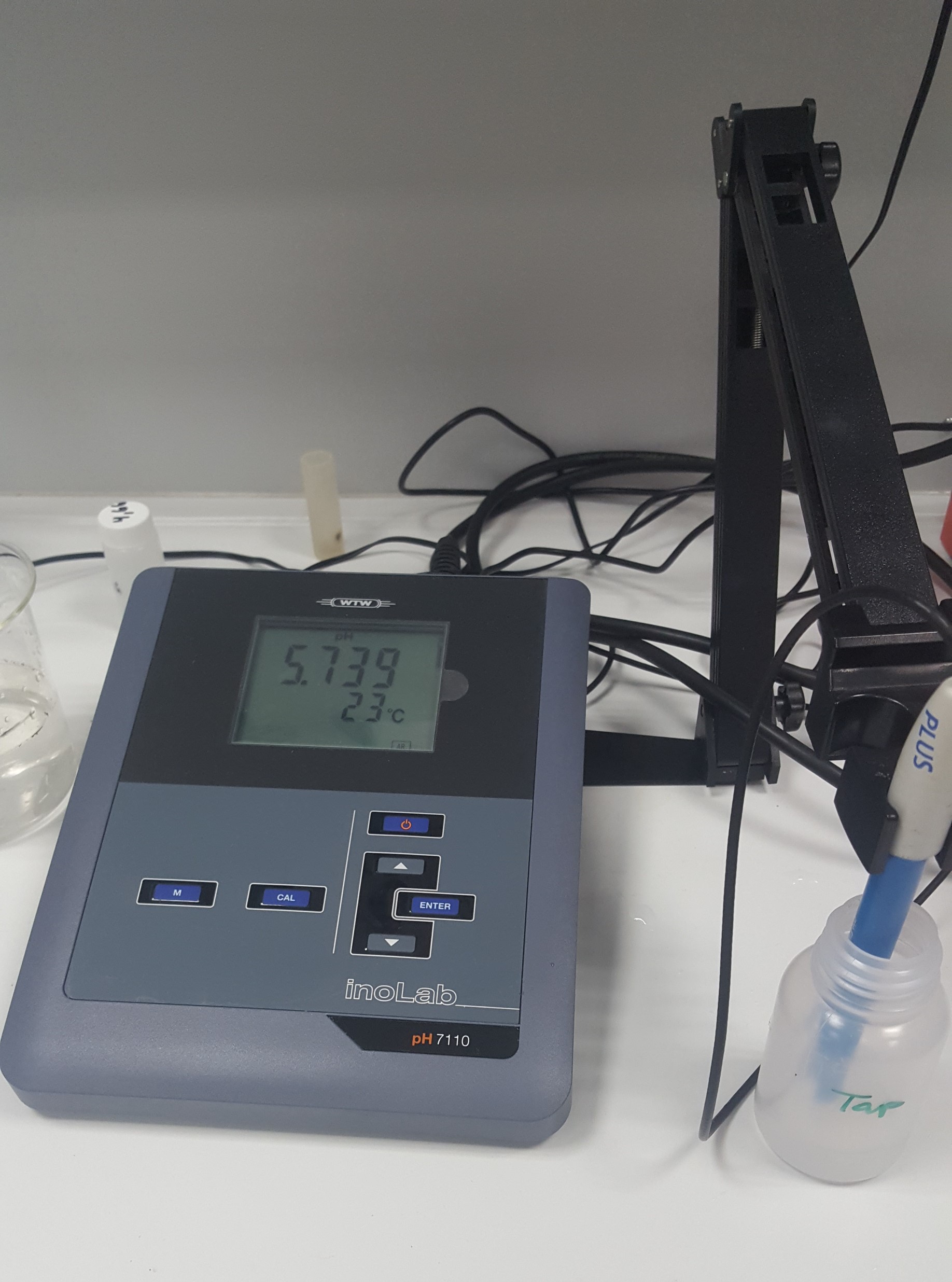|
Hazardous Materials Apparatus
250px, The Santa Barbara Fire Department Hazmat vehicle staged at an incident. A hazardous material (hazmat) apparatus is a vehicle used by emergency services to respond to calls involving potentially hazardous materials. These vehicles are customized to fit the needs of the agency responsible for the apparatus, which may be a rescue squad, fire department, emergency medical services, law enforcement agency, or military. A typical hazmat vehicle will have a portion dedicated to a command and communications center. Often fitted with computers, televisions, two-way radios and other equipment. This command center is usually located in a portion of the vehicle that slides out or expands much like is found on a typical recreational vehicle. Hazmat vehicles also often come with a portable lab complete with sinks and fume hoods that allow for the analysis of samples collected at the scene. Essentially a mobile laboratory, this allows early on-site scientific analysis and monitoring to ... [...More Info...] [...Related Items...] OR: [Wikipedia] [Google] [Baidu] |
Fume Hood
A fume hood (sometimes called a fume cupboard or fume closet) is a type of local ventilation device that is designed to limit exposure to hazardous or toxic fumes, vapors or dusts. Description A fume hood is typically a large piece of equipment enclosing five sides of a work area, the bottom of which is most commonly located at a standing work height. Two main types exist, ducted and recirculating (ductless). The principle is the same for both types: air is drawn in from the front (open) side of the cabinet, and either expelled outside the building or made safe through filtration and fed back into the room. This is used to: * protect the user from inhaling toxic gases (fume hoods, biosafety cabinets, glove boxes) * protect the product or experiment (biosafety cabinets, glove boxes) * protect the environment (recirculating fume hoods, certain biosafety cabinets, and any other type when fitted with appropriate filters in the exhaust airstream) Secondary functions of these devic ... [...More Info...] [...Related Items...] OR: [Wikipedia] [Google] [Baidu] |
Hazmat Suits
A hazmat suit (hazardous materials suit) is a piece of personal protective equipment that consists of an impermeable whole-body garment worn as protection against hazardous materials. Such suits are often combined with self-contained breathing apparatus (SCBA) to ensure a supply of breathable air. Hazmat suits are used by firefighters, emergency medical technicians, paramedics, researchers, personnel responding to toxic spills, specialists cleaning up contaminated facilities, and workers in toxic environments. History The hazmat suit is believed to originate from the Manchurian plague epidemic of 1910–1911, wherein Dr. Wu Lien-teh's promoted the use of various forms of personal protective equipment to prevent the spread of the pneumonic plague. Capabilities Overview The United States Department of Homeland Security defines a hazmat suit as "an overall garment worn to protect people from hazardous materials or substances, including chemicals, biological agents, or radio ... [...More Info...] [...Related Items...] OR: [Wikipedia] [Google] [Baidu] |
Self-contained Breathing Apparatus
A self-contained breathing apparatus (SCBA), sometimes referred to as a compressed air breathing apparatus (CABA) or simply breathing apparatus (BA), is a device worn to provide breathable air in an atmosphere that is immediately dangerous to life or health. They are typically used in firefighting and industry. The term ''self-contained'' means that the SCBA is not dependent on a remote supply of breathing gas (e.g., through a long hose). If designed for use under water, it is also known as a Scuba set (self-contained underwater breathing apparatus). When not used underwater, they are sometimes called industrial breathing sets. Unofficial names include ''air pack'', ''air tank'', ''oxygen cylinder'' or simply ''pack'', which are mostly used in firefighting. An SCBA typically has three main components: a high-pressure tank (e.g., , about 150 to 374 atmospheres), a pressure regulator, and an inhalation connection (mouthpiece, mouth mask or face mask), connected together and mount ... [...More Info...] [...Related Items...] OR: [Wikipedia] [Google] [Baidu] |
Personal Protective Equipment
Personal protective equipment (PPE) is protective clothing, helmets, goggles, or other garments or equipment designed to protect the wearer's body from injury or infection. The hazards addressed by protective equipment include physical, electrical, heat, chemicals, biohazards, and airborne particulate matter. Protective equipment may be worn for job-related occupational safety and health purposes, as well as for sports and other recreational activities. ''Protective clothing'' is applied to traditional categories of clothing, and ''protective gear'' applies to items such as pads, guards, shields, or masks, and others. PPE suits can be similar in appearance to a cleanroom suit. The purpose of personal protective equipment is to reduce employee exposure to hazards when engineering controls and administrative controls are not feasible or effective to reduce these risks to acceptable levels. PPE is needed when there are hazards present. PPE has the serious limitation tha ... [...More Info...] [...Related Items...] OR: [Wikipedia] [Google] [Baidu] |
Miscibility
Miscibility () is the property of two substances to mix in all proportions (that is, to fully dissolve in each other at any concentration), forming a homogeneous mixture (a solution). The term is most often applied to liquids but also applies to solids and gases. For example, water and ethanol are miscible because they mix in all proportions. By contrast, substances are said to be immiscible if there are certain proportions in which the mixture does not form a solution. For one example, oil is not soluble in water, so these two solvents are immiscible. As another example, butanone (methyl ethyl ketone) is significantly soluble in water, but these two solvents are also immiscible because in some proportions the mixture will separate into two phases. Organic compounds In organic compounds, the weight percent of hydrocarbon chain often determines the compound's miscibility with water. For example, among the alcohols, ethanol has two carbon atoms and is miscible with wat ... [...More Info...] [...Related Items...] OR: [Wikipedia] [Google] [Baidu] |
Containment Boom
A containment boom is a temporary floating barrier used to contain an oil spill. Booms are used to reduce the possibility of polluting shorelines and other resources, and to help make recovery easier. Booms help to concentrate oil in thicker surface layers so that skimmers, vacuums, or other collection methods can be used more effectively. They come in many shapes and sizes, with various levels of effectiveness in different types of water conditions. Often the first containment method to be used and the last equipment to be removed from the site of an oil spill, they are "the most commonly used and most environmentally acceptable response technique to clean up oil spills in the United States." Booms used in oil spills can be seen as they rest on the surface of the water, but can have between 45 and 120 cm (18 to 48 inches) of material that hangs beneath the surface. They are effective in calm water, but as wave height increases oil or other contaminants can easily wash ove ... [...More Info...] [...Related Items...] OR: [Wikipedia] [Google] [Baidu] |
PH Meter
A pH meter is a scientific instrument that measures the hydrogen-ion activity in water-based solutions, indicating its acidity or alkalinity expressed as pH. The pH meter measures the difference in electrical potential between a pH electrode and a reference electrode, and so the pH meter is sometimes referred to as a "potentiometric pH meter". The difference in electrical potential relates to the acidity or pH of the solution. Testing of pH via pH meters (pH-metry) is used in many applications ranging from laboratory experimentation to quality control. Applications The rate and outcome of chemical reactions taking place in water often depends on the acidity of the water, and it is therefore useful to know the acidity of the water, typically measured by means of a pH meter. Knowledge of pH is useful or critical in many situations, including chemical laboratory analyses. pH meters are used for soil measurements in agriculture, water quality for municipal water supplies, ... [...More Info...] [...Related Items...] OR: [Wikipedia] [Google] [Baidu] |
Radiation Detector
In experimental and applied particle physics, nuclear physics, and nuclear engineering, a particle detector, also known as a radiation detector, is a device used to detect, track, and/or identify ionizing particles, such as those produced by nuclear decay, cosmic radiation, or reactions in a particle accelerator. Detectors can measure the particle energy and other attributes such as momentum, spin, charge, particle type, in addition to merely registering the presence of the particle. Examples and types Many of the detectors invented and used so far are ionization detectors (of which gaseous ionization detectors and semiconductor detectors are most typical) and scintillation detectors; but other, completely different principles have also been applied, like Čerenkov light and transition radiation. Historical examples * Bubble chamber * Wilson cloud chamber (diffusion chamber) *Photographic plate ;Detectors for radiation protection The following types of particle detector a ... [...More Info...] [...Related Items...] OR: [Wikipedia] [Google] [Baidu] |
National Fire Protection Association
The National Fire Protection Association (NFPA) is an international nonprofit organization devoted to eliminating death, injury, property and economic loss due to fire, electrical and related hazards. As of 2018, the NFPA claims to have 50,000 members and 9,000 volunteers working with the organization through its 250 technical committees. History In 1895, a Committee on Automatic Sprinkler Protection was formed in Massachusetts by men affiliated with several fire insurance companies and a pipe manufacturer to develop a uniform standard for the design and installation of fire sprinkler systems. At the time, there were nine such standards in effect within of Boston, Massachusetts, and such diversity was causing great difficulties for plumbers working in the New England New England is a region comprising six states in the Northeastern United States: Connecticut, Maine, Massachusetts, New Hampshire, Rhode Island, and Vermont. It is bordered by the state of New York to the ... [...More Info...] [...Related Items...] OR: [Wikipedia] [Google] [Baidu] |
Recreational Vehicle
A recreational vehicle, often abbreviated as RV, is a motor vehicle or trailer that includes living quarters designed for accommodation. Types of RVs include motorhomes, campervans, coaches, caravans (also known as travel trailers and camper trailers), fifth-wheel trailers, popup campers, and truck campers. Features Typical amenities of an RV include a kitchen, a bathroom, and one or more sleeping facilities. RVs can range from utilitarian – containing only sleeping quarters and basic cooking facilities – to luxurious, with features like air conditioning (AC), water heaters, televisions and satellite receivers, and quartz countertops, for example. RVs can either be trailers (which are towed behind motor vehicles) or self-propelled vehicles. Most RVs are single-deck; however, double-deck RVs also exist. To allow a more compact size while in transit, larger RVs often have expandable sides (called slide-outs) or canopies that are deployed when stationary. History ... [...More Info...] [...Related Items...] OR: [Wikipedia] [Google] [Baidu] |
SBFD Hazmat Vehicle
The Santa Barbara City Fire Department (SBFD) is the agency that provides fire protection and basic life support (BLS) emergency medical services exclusively for the city of Santa Barbara. Not to be confused Santa Barbara County Fire Department. Equipment Type 1 Engine Santa Barbara City has a total of 11 Pumper Engines with 7 acting as frontline engines and an additional 4 in reserve. These engines are staffed by 3 personnel, A captain, an engineer and a firefighter. Each engine is fitted with a 1500 GPM pump and carries 750 gallons of water. Type 3 Engine The Type 3 Engines, which are used mainly for vegetation fires, are smaller than the Type 1s which are used primarily in the city. The Type 3 has 4 x 4 capability and can thus climb hills and make it through rough terrain. One of the features that makes the Type 3 ideal for vegetation fires is that it can pump water while driving, whereas the Type 1 engine must be put into park to flow water. This allows the Type 3 to ... [...More Info...] [...Related Items...] OR: [Wikipedia] [Google] [Baidu] |

_(1).jpg)







